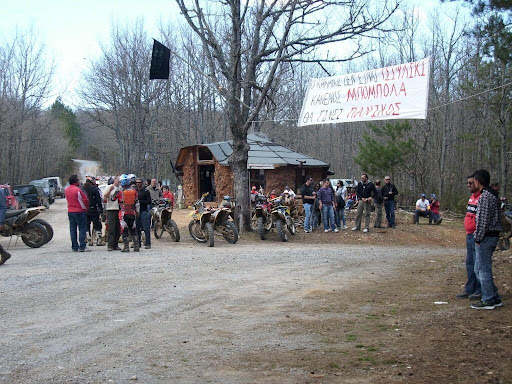The past two years have been marked by an ever-accelerating cascade of global “events”: once in a lifetime events, generational events, unexpected events, catastrophic events. From climate change to politics and the Covid-19 pandemic, each has been represented as a moment of radical rupture between past and present, often portrayed as having brought about a radically different “new normal”. It is upon this backdrop that we were spurred on to explore the political nature of “eventedness” at the Reflections on Political Engagement workshop and, later, as part of this collective writing process. Across our ethnographies, we witnessed a tension between what we term “punctuation”, on the one hand, and “flow”, on the other. Within the longue durée of socio-historical transformations, certain events that are part of the ever-developing timeline of political engagement acquire elevated status: they punctuate the flow of movements. As anthropologists, we are used to placing the focus on our interlocutors’ ordinary lives, their everyday forms of resistance, and their long-term struggles. We share with some political movements a drive to understand how a certain moment of “crisis” came to be, and yet we question the ways that times charged with heightened “eventedness” are seen (often retrospectively) to mark a “rupture”. Considering the socio-political implications of these labels, we asked ourselves: for whom is an event eventful? What are the temporal practices at play in making, sustaining, or claiming moments of heightened political engagement? Why do these become framed as “events”, while other circumstances do not? How to locate the beginnings and ends of political mobilisations through time? Here we illustrate some possible approaches to these questions through two sustained ethnographic cases: the struggle over the opening of a new mine in a mountain village in Northern Greece, and political violence and martyrdom in the Kashmir Valley.
What are the temporal practices at play in making, sustaining, or claiming moments of heightened political engagement?
Pasts and futures
Megali Panagia, a village in Northern Greece, was divided by the opening of a new mine in Skouries forest. After a decade of mobilisation against the Canadian mining company Eldorado Gold, the members of the Struggle Committee, who constituted the core of the organised resistance, were frustrated. The Struggle Committee was formed gradually after a small group of locals reacted to the announcement of the company’s plans for the new mine in 2009. Around this time, the Committee attempted to consolidate its presence in the mountain by building a wooden lookout (Filakio). From this spot, they managed to observe – and sabotage – the construction process for a while. As the tension around the mine project started escalating, protests in the mountain became regular, while violent confrontations with the police and the local miners caught the national media’s attention. Locals from neighbouring villages and outsiders joined the anti-mining movement in solidarity. Memories of meetings in the mountain before the protests, of clashes with the riot police, and of efforts to communicate the issues at hand to a broader public dominate activists’ current narratives, indicating a present overshadowed by the past. With the mine’s opening in 2019, therefore, the present of the anti-mining movement was confronted with and described as the negative outcome of a glorious past of resistance. Yet, despite the activists’ despair in the present, their past experiences of violent confrontation and direct resistance still constitute for the members of the Struggle Committee the only possible way that they could have acted. As they often state: “we could not have done otherwise”.
Despite the activists’ despair in the present, their past experiences of violent confrontation and direct resistance still constitute the only possible way that they could have acted.
As the Struggle Committee’s current lack of hope suggests, temporality is a crucial issue when it comes to understanding socio-political events, determining the ways in which history is experienced in the present by triggering asymmetrical historical resonances that render certain “pasts” more present than others. “History” itself becomes a culturally contingent way of thinking where an event is to be explained by placing it within a socio-historical context that built up to it. Further, we can know the past through its concrete temporalisations, directly implicating past, present, and future relations into historical knowing. Eric Hirsch and Charles Stewart (2005) broke apart linear temporal understandings of history to suggest that historicity is entirely socially constructed, with past, present, and future temporalities in constant conversation with each other. Social movements, then, do not just produce knowledge about the past in relation to the present, but also in anticipation of the future. In moments of radical political engagement, both past and future are re-configured, made fluid through the opening of the horizon of socio-political possibilities; they open up the immediate and far future, creating a space for the imagination (and hope) of socio-political alternatives. It is within this space that change appears possible and political actions seem necessary. Possible futures come into focus, while others fade into the background of “yesterday’s world”, yet all remain non-predetermined, in continuous durational flow with concurrent past, present, future temporalities that remain in conversation with each other.
In moments of radical political engagement both past and future are re-configured, made fluid through the opening of the horizon of socio-political possibilities.
After many years of exhausting struggle against both the mining company and state repression, the election of the right-wing party of New Democracy in July 2019 left no hope of preventing the mine’s opening. At this point, for politically engaged villagers, the anti-mining movement seemed pointless; questions regarding the future were articulated in terms of entrapment and characterized by shared feelings of frustration which blurred attempts to envision what could happen next. Futurity, then, is not always an interesting question for our interlocutors. Sometimes our decision to sketch the present as subject to change might reveal an optimistic belief in overcoming current difficulties as a kind of politically-engaged ethnography. In such cases the anthropologist’s commitment to politically- engaged research can translate into contextualization strategies that do not mirror how our interlocutors really frame their past or future. In the process of temporalizing social struggles, emic concepts of “event” become central for understanding the punctuation and flow of any political movement. As we have anticipated, however, this centring of events comes with its own challenges.

Punctuation and flow
In Indian Administered Kashmir valley, political violence and the Indian state’s military oppression have framed the fabric of everyday life for over three decades. In 2016, the killing of Burhan Wani – a young local militant who was popular for his outreach amongst the local population and for his engagement with the frustrations of prolonged state oppression – became an “event” in the political movement of Kashmir. Wani’s killing meant an emotional, intimate, and existential loss for many Kashmiris. Due to his extensive social media presence and outreach after joining the armed resistance movement, several in Kashmir felt the experience of Kashmiri struggle against the Indian state through their social media feeds. The heightened “eventedness” of Wani’s killing hence marked a departure from the traditional modus operandi of the movement for Kashmiri self-determination. In the chronology of the Kashmiri political movement, armed encounters have killed innumerable militants and civilians and caused immeasurable damage to life and property in Kashmir. Wani’s killing was preceded and succeeded by several other killings of many young men by the same state forces. Media discourse and the narrative constructed by the activists and political commentators argued for reading the killing as “the event” that destabilized the established knowledge forms and temporality of the Kashmiri movement. Wani’s killing triggered the re-conceptualisation of the past and the future of the resistance movement because of the outrage and discontent it elicited.
Wani’s killing triggered the re-conceptualisation of the past and the future of the resistance movement because of the outrage and discontent it elicited.
As much as Wani’s killing opened new vectors of thought to understand the Kashmiri political movement, the innumerable everyday street-corner violent episodes of young men and women being harassed and assaulted by armed forces, or the systemic incapacitation of school children through endless cycles of curfews and lockdowns to induce fear and trauma, have been equally significant in the making of the political movement. For example, the regular non-lethal law and order measure of conducting internet, telephone, mobile telecommunication blackouts for prolonged periods that disqualifies thousands of school and college students from appearing for examinations and other educational needs are rarely if at all considered heightened “events” of human rights violation that destabilise the rhythm of the political movement. Meanwhile, the “event” of Burhan Wani’s death did mandate historicization, contextualisation and a re-interpretation of the past and the future of the political movement.
As ethnographers, we are used to focusing our attention on ordinary lives and everyday forms of resistance and political engagement. We approach things in terms of processes. A big part of our job lies in contextualizing and historicizing socio-political phenomena, and so we are often cautious of conceptualizations of “rupture”, “crisis” and extraordinary “events”. Nonetheless, all of us have encountered activists and mediatised discourses on political movements that do attempt to produce events that exist out of the ordinary and have a limited timeframe (by definition, an event cannot last forever, otherwise it becomes the new ordinary) and result in structural transformations. These instances are usually the ones that draw the most media attention and the ones included in historical accounts. However, any movement’s politics of punctuation and flow cannot be ascertained only by (or through) those events that receive amplification. In political movements with a prolonged time-scape of resistance, non-amplified or non-mediatised events are equally significant in contributing to the flow of movements.
How do we think about the innumerable moments of violence and loss that leave an imprint to reorganise the flow of the movement away from the mediatised gaze of a heightened event?
This all made us ponder about those events whose singularities fade away in the “banality” of everyday violence. How do we think about the innumerable moments of violence and loss that leave an imprint to reorganise the flow of the movement away from the mediatised gaze of a heightened event? How do we conceptualise punctuation when the moments that constitute a turning-point and the banal co-exist in the flow of the movement? We tend to think of events as occurrences that generate a rupture “in the moment” and as temporal landmarks that punctuate history and reassemble the relation between past and future. Events are trapped in this tension – terminological, conceptual, and strategic – between the occurrence and the outcome. They are bounded by the histories that provide the conditions of possibility for them, the potential futures that they suggest, envision and prefigure, and the actual future against which they lose or acquire significance and ultimately their status as events.
Conclusion
In this piece, we sought to problematize the concept of the rupturing political event by highlighting the complex temporal rhythms of political movements. What emerges are the distinctions between how our interlocutors, global narratives, and we as ethnographers recognise what constitutes an event of political significance and a historical break. Activists often frame their own political engagements as “event-like” and highlight specific moments of heightened participation as particularly important for their struggles. They bring up the past as a way of framing these moments within a specific historical narrative, punctuating certain events whose singularity, texture and affective powers build up the momentum of the political movement. Signs referencing the past and re-readings of historical events are used strategically to gain support and expose the shortcomings of the present. In this way, in moments of radical political engagement, the past is rendered fluid, open to reconfiguration, and reinterpretation as certain historical events grow in intensity and importance.
We are subjected to the temporalities of the social movements we engage in and document.
Our reflections have explored not only the tension between the sense of rupture that comes with moments of heightened political engagement but also the interpretations of its significance that can only come in the aftermath. As researchers, we must determine how far back we are willing and able to go and which moments to focus on in order to contextualize present-day struggles; we are also bound to establish a temporal endpoint for our inquiry and fieldwork. When writing to be read, we have to choose the moments we decide to retell and those we keep to our fieldwork journals. More crucially, we are subjected to the temporalities of the social movements we engage in and document. It is the process of travelling through the paradoxes of our ethnographic engagement with a social movement and in the making of our writings that our identities as ethnographers are shaped, underlining the politics of such engagements.
References
Hirsch, E. and Stewart, C. 2005. Introduction: Ethnographies of historicity. History and Anthropology, 16(3): 261-274.
Image: Photo by Glen Ardi on Unsplash.











